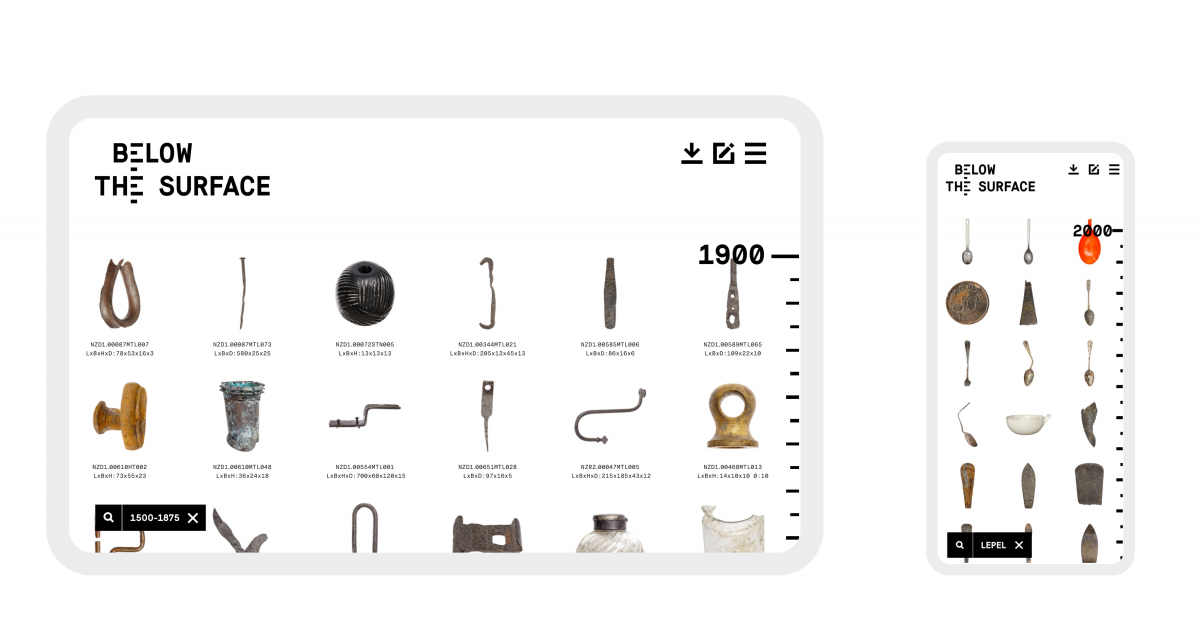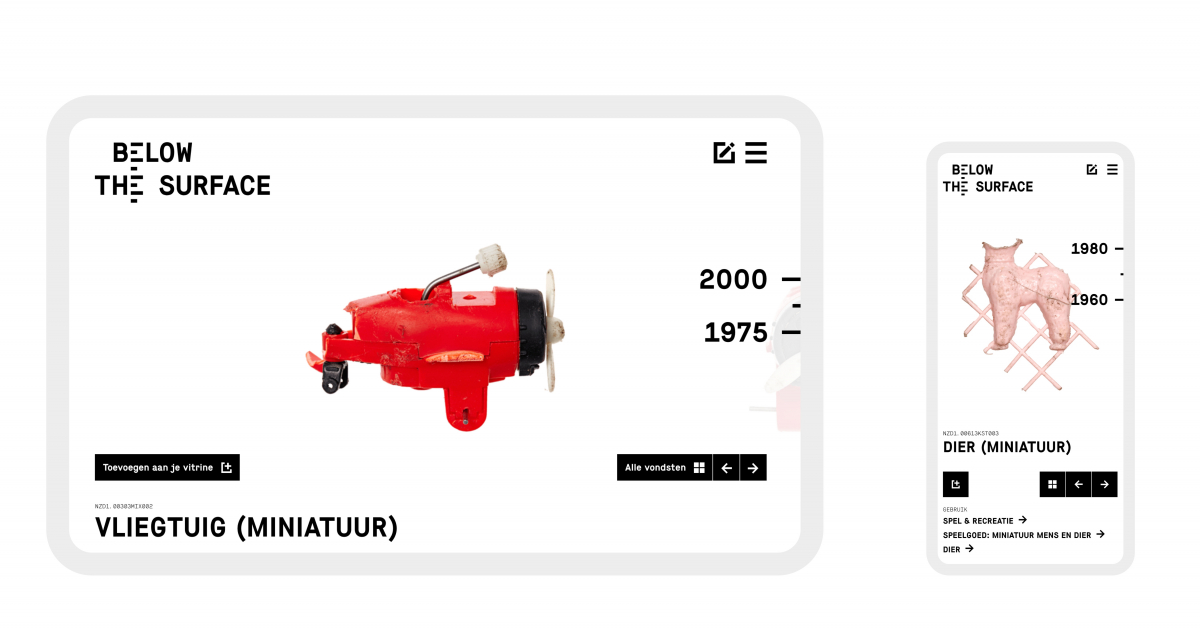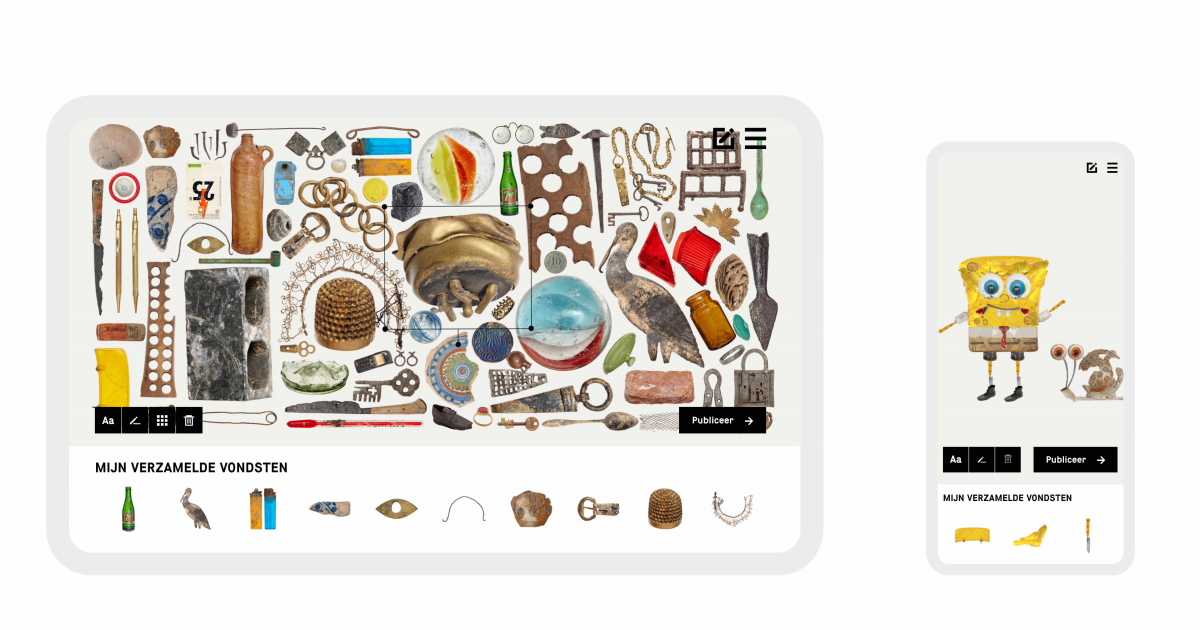Below the Surface

15 years of digging during the construction of the North-South metro line in Amsterdam yielded 700,000 archaeological finds. We presented 'the stuff' to the world in a digital format. To give the objects from Amsterdam the stage they deserve.
The starting point of the project was to make the set of 200,000 archaeological finds accessible and fun. A book has been published about all the finds, documentaries have been made and in collaboration with artists several display cases have been designed for metro station Rokin.
The municipality was also obliged to open up the archaeological data to the public. The target group for this is the general public, but especially children from Amsterdam who will receive history lessons based on the book. We were asked to show the finds to the target group in an inspiring and accessible way. In addition, the challenge of the assignment was to involve and challenge the target group to get to work with the finds themselves.
We received a lot of international attention! CNN, Slate, FastCo, Forbes, Wired. And to top it all, the project was put on the front page of The New York Times! Check: https://www.nytimes.com/2018/10/24/arts/amsterdam-trash.html
The result is an interactive website. Black and white, no page navigation, subtle icons and mouseovers. All done in order to draw attention to the objects. The big challenge was to make the finds feel like a collection and not like a webshop. The timeline on the right helps you to scroll through 'the stuff'.
The size of the collection is shown, but also the variation. And visitors can use the finds to do their own archaeological research and create their own story. You can add any find to a personal display case and design it the way you want.
The relatively broad origin of target groups has led us to choose an English name for the project.
Amsterdam archaeologists made almost 700,000 finds in the North-South metro line construction pits. This is 'stuff' that the people of Amsterdam have thrown into the river Amstel over the centuries. What’s the best way to present that online?
The digital platform was given the following objectives:
Target groups proactively in connection with the rich history of the city.
Connecting target groups to the finds and the stories behind them.
Connect the physical display case to a digital floor.
Making the digital experience accessible with an absolute minimum of thresholds (not installing apps, minimal explanation, etc.).
In principle, the municipality of Amsterdam wanted to reach everyone. In order to provide some focus, we have formulated a number of sub-target groups:
Youth, from an educational point of view.
Residents, to connect with (stories about / history of) the city.
Tourists, to offer more information about Amsterdam.



Jury feedback
PLATFORM / SILVER
This is a truly fun idea, combining actual archaeology with some decidedly interactive executions.